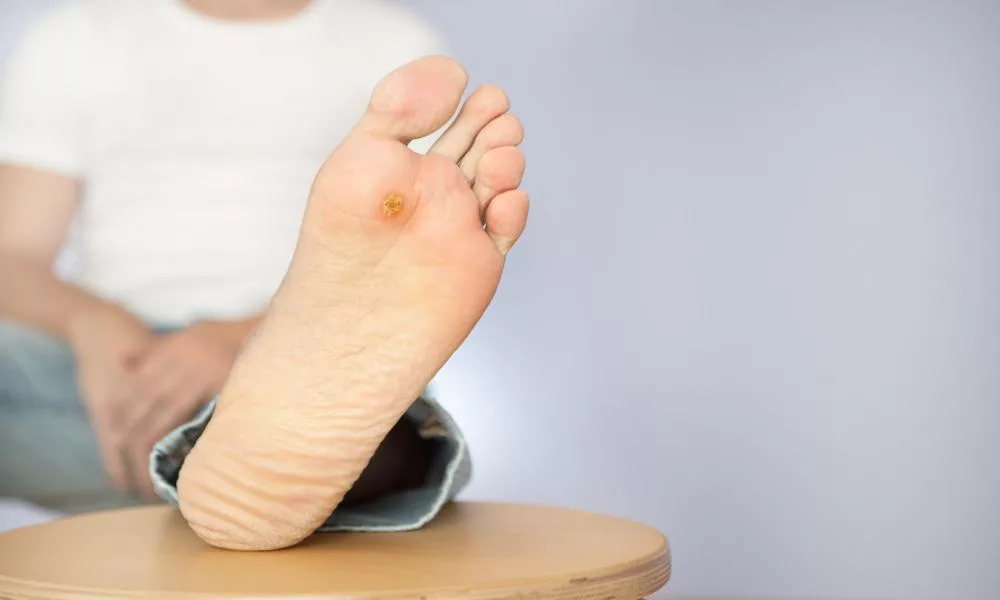
Foot Ulceration Predictive Marker – Plantar shear stress (A force that causes layers to slide upon each other in opposite directions) has been held accountable as a causative factor in diabetic foot ulcers (DFU) (1,2).
Delbridge et al. (2) recognized shear stress as a major causative factor by stating that it is shear rather than vertical load that is responsible for tissue breakdown that occurs deep to the skin. Historically, research in this area has been hampered by an underestimation of the importance of shear stress and the lack of technology to measure it.
Emerging evidence within the past decade has demonstrated the clinical significance of shear to foot ulceration (3–5). We previously revealed that individuals with diabetic neuropathy (DN) experience higher plantar (bottom of the foot) shear compared with control subjects (5).
However, to our knowledge, no study has compared peak shear in individuals with a history of Diabetic Foot Ulcers to those patients with Diabetic Neuropathy but no history of Diabetic Foot Ulcers. We quantified peak plantar shear (PS) in 9 subjects with (DFU) and 16 DN subjects without (DN) previous ulcers using the Cleveland Clinic shear plate (5).
Plantar Shear was significantly higher in the Diabetic Foot Ulcer group (DFU 135.3 ± 60.6 kPa, DN 86.4 ± 30.3 kPa, P = 0.0465).
This study revealed, for the first time, that Plantar Shear is significantly higher in patients with a history of Diabetic Foot Ulcer, representing a risk factor for development of Diabetic Foot Ulcer (Fig. 1). Although the study was likely under-powered to detect a significant difference in Peak Pressure between the two groups, we believe that the higher Peak Pressure in Diabetic Foot Ulcers subjects is clinically meaningful. The difference in Peak Shear was sufficient to generate an effect size >0.9, and hence a small sample size was sufficient to capture the statistical significance.
Shear stresses act tangentially in anteroposterior and mediolateral (front-to-back and side-to-side) directions at the foot-ground interface, transmitting a complex stress–strain pattern to the sublayers of the plantar tissue. These stresses are applied in alternating directions and are abrasive to the plantar surface, particularly during walking. An analogy is a running chainsaw.
A running chainsaw applies abrasive shear forces that will easily sever the limb of a tree. When shear force is removed, i.e., when the engine is off, it may be impossible to break the same branch by applying pressure alone. Shear stress may not only lead to abrasion of the skin and plantar tissue but also damage the sublayers of the tissue and contribute to frequent formation of calluses under the diabetic foot, which are well-known risk factors.
Emerging evidence suggests that peak shear should be used jointly with pressure to better predict risk for developing a Diabetic Foot Ulceration. Future research should investigate the clinical implications of shear in a large longitudinal cohort study. With better biomechanical markers at hand, engineers and clinicians can work together to identify developing ulcers and design novel methods and devices to effectively prevent them.
At Arizona Foot, we take great pride in the positive feedback we receive from our patients. Their satisfaction is our top priority. And we strive to exceed their expectations with every interaction. Here are a few testimonials from our valued patients:

At the Foot and Ankle Center of Arizona, we think it’s important that you have the knowledge you need to make good decisions about your foot and ankle care. Our knowledgeable staff is hospitable and focuses on providing excellent patient care. Our location: 7304 E Deer Valley Road Ste #100 Scottsdale, AZ 85255. Please reach out to our office with questions through the contact us or request an appointment page on our website.
Clinic Hours
Our Clinic Location